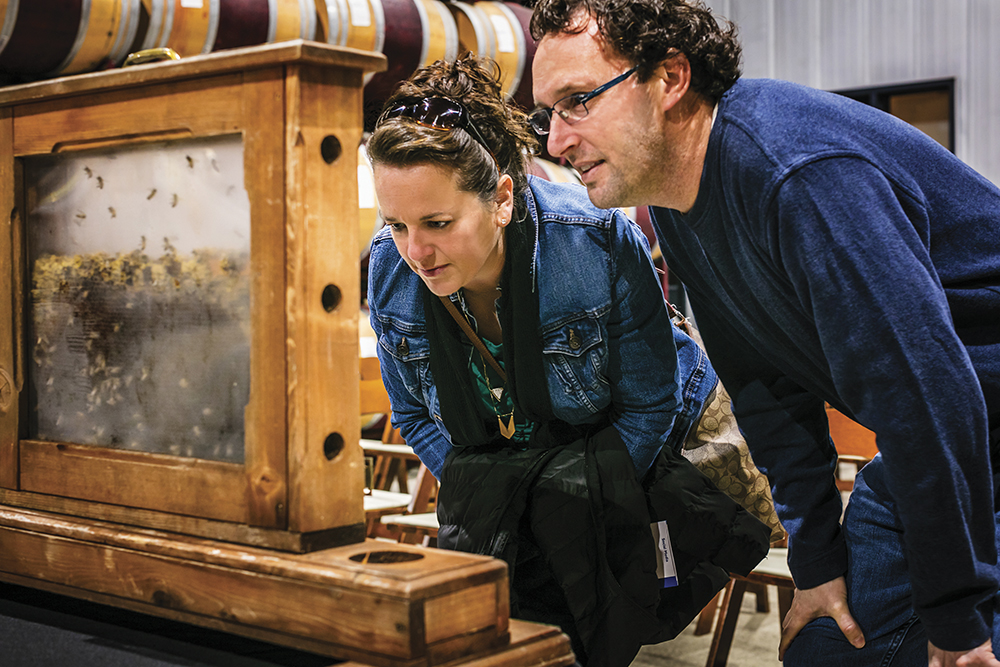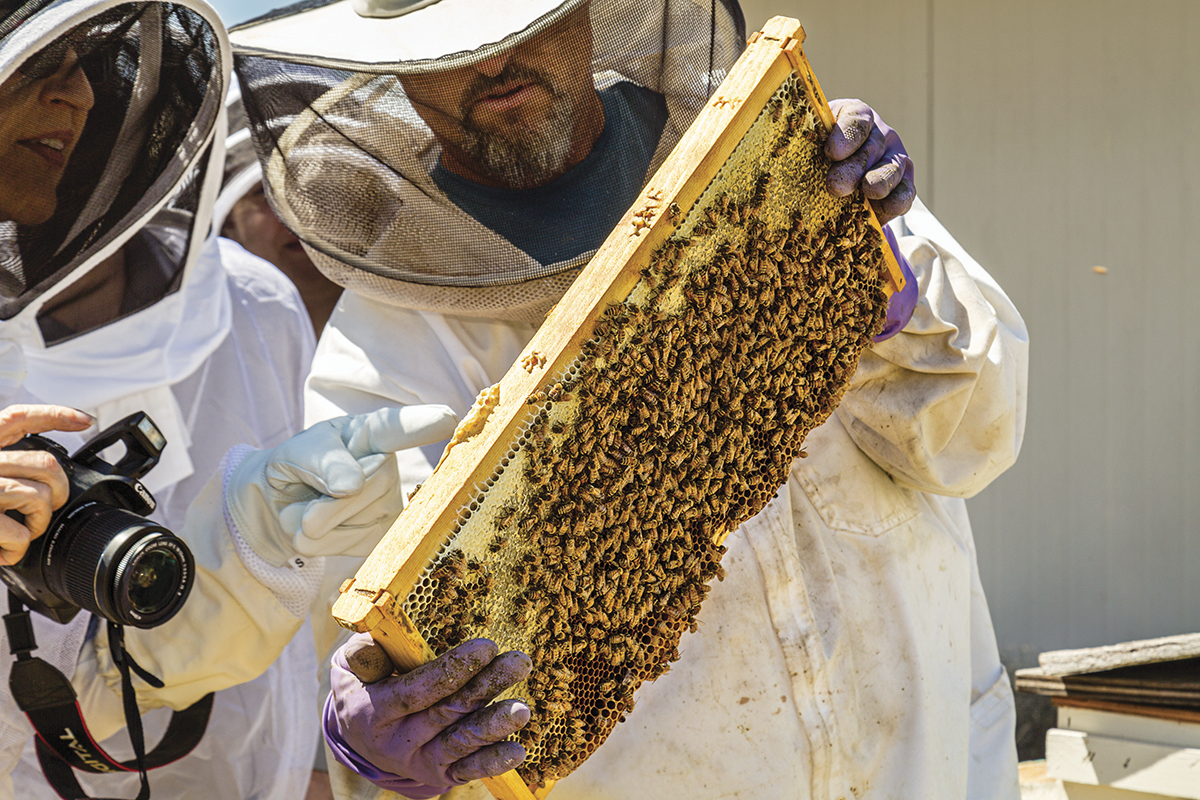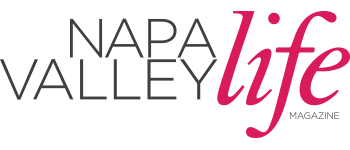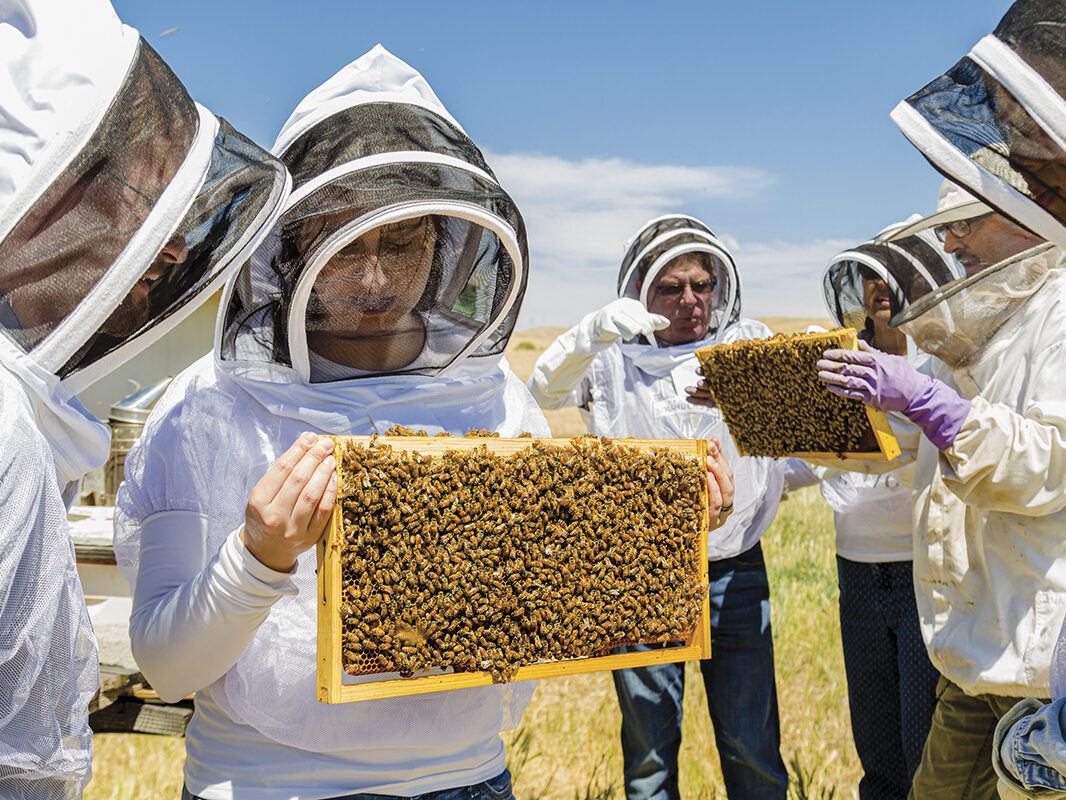Napa Valley is a cornucopia for honeybees. Between the valley’s agricultural bounty, the wild habitats ideal for native plants, fruit and nut trees sprinkled throughout the countryside, and winery landscapes overflowing with flowers, there is no shortage of food for these creatures.
Gerard’Z Honeybees hives grace many of the region’s distinctive wineries, vineyards, and the backyards of owner Ed Zawada’s many friends. Visitors enjoying a glass of wine in the culinary garden of a local restaurant, surrounded by flowering rosemary, lavender, and oregano, are likely sharing that experience with some of his hardworking forager bees. Zawada has found he can put hives almost anywhere in the county, and they thrive. “I’ve put hives everywhere from rooftops in downtown Napa to wilderness areas at the top of Spring Mountain, and the bees seem to have an ample food supply almost anywhere, as evidenced by their honey production.” Zawada’s hives have found homes at V. Sattui Winery, Laird Family Estate, Schug Winery, Housley Napa Valley, Napa Yard, and Robert Biale Vineyards, to name but a few spots.
In addition to producing some of Napa Valley’s most sought-after wildflower honey, Zawada now offers workshops for the bee-curious and those looking to understand better the role bees play in agriculture and nature. As a third-generation beekeeper whose agrarian roots go back to Poland, Zawada understands the art of tending bees intimately. Zawada spent much of his childhood caring for the hives on his family’s farm under the watchful eye of his grandfather, Gerard. Important lessons Zawada learned from his grandfather were not to fear the bees and ways of gently tending the hives to protect the colonies. He also witnessed firsthand the bees’ vital role in pollinating his grandfather’s gardens and fruit trees, which in turn fed his family.
 Gerard’Z Beekeeping Workshops
Gerard’Z Beekeeping Workshops
Zawada enjoys nothing more than “talking bees” and opening up a hive to show the amazing activity within. “People don’t know much about bees, and these workshops are a great way to connect people not only to the inner workings of a hive but also for them to consider the vast impact bees have on our lives.”
Gerard’Z Beekeeping Workshops are a lovely way to spend a Sunday afternoon. Workshops are held at Napa Yard and run for two and a half hours. The experience occurs in the restaurant’s garden, with hives and bees actively foraging nearby. Beekeeping equipment is laid out for participants to examine, as are samples of the “products of the hive,” namely raw honey, honeycomb, bee pollen, and extracted wax. Zawada provides an in-depth introduction into the ways of bees and techniques of beekeeping, giving a bit of beekeeping history and fielding questions regarding the current state of the art. Participants then get suited up for a hands-on exploration of the hives.
As participants gather around the brood boxes, Zawada demonstrates how to open up the hives and pull frames, allowing willing participants to do the same. “I am sensitive to the varying degrees of comfort people have in making contact with the bees, and find some want to get right in the hive, while others prefer just to observe. My goal is to make this a stimulating interaction, but for everyone to feel comfortable.” Zawada will pull frames that show the brood comb and larva in various stages of development and other heavy frames with honeycomb. Participants will get an up-close view of the bees in action and will get to see the queen.
The workshop is rounded out by a picnic lunch and a wine and honey tasting, with Zawada setting out a variety of wildflower and monofloral types of honey for sampling. Guests are also invited to try honeycomb and raw bee pollen. Zawada hopes all will walk away with a better understanding of the importance of bees and a bit of an adrenaline rush from seeing a colony and queen up close, a unique and rare experience. Zawada also makes his honey products available for purchase to those wanting a souvenir of their experience.
 About Ed Zawada and His Napa Valley Honey
About Ed Zawada and His Napa Valley Honey
After decades of working in high tech, Zawada decided it was time to rekindle the deep ties he felt to his family and farming roots – to return to beekeeping. But rather than relegating himself to backyard beekeeping in retirement, Zawada started Gerard’Z Honeybees, an homage to his Grandpa Gerard. Zawada made connections with wineries and ranches and had hives all over the valley in no time. From there, he began cultivating the best honey in the region. “This is a very satisfying time in my life, pursuing my passion. And what better place to do this than Napa Valley,” says Zawada.
Honey local to Napa Valley is what Zawada calls a “wildflower varietal,” jokingly appropriating wine terminology. “My Napa honey reflects the wide range of plants the bees forage in this area. Napa honey has a complex, intriguing flavor which varies greatly throughout the year.” The spring wildflower honey tends to be light and delicately floral, while late summer and fall honey is rich and dark, with hints of molasses and buckwheat. Zawada’s customers at the regional farmer’s markets love these seasonal variations, and each type has its own fanbase.
Gerard’Z Honeybees products can be purchased at the Napa and St. Helena Farmers Markets and online.

